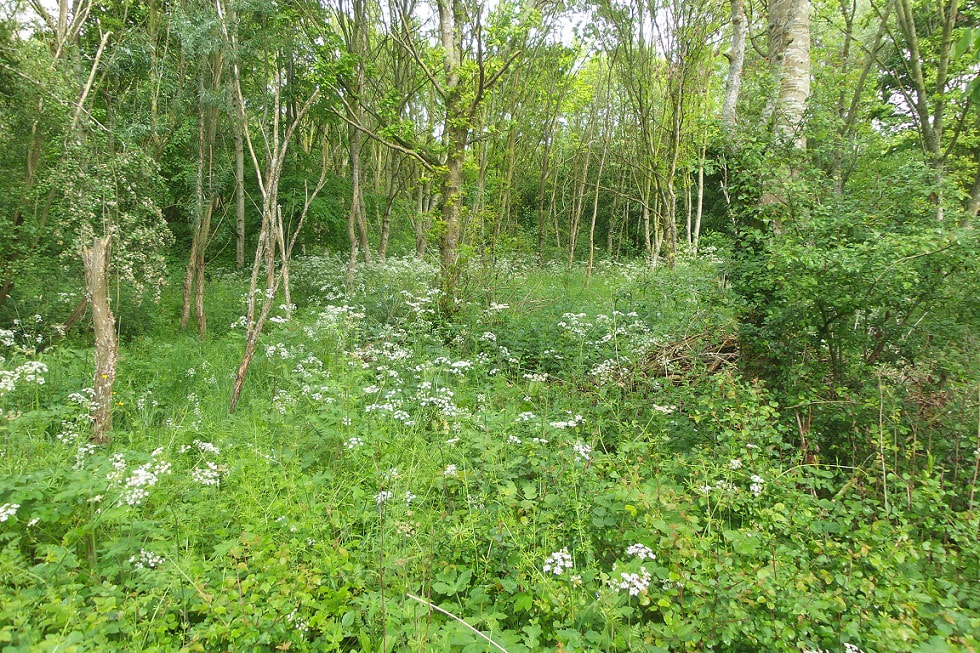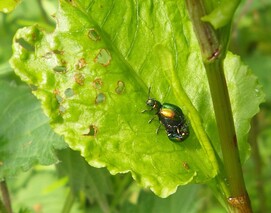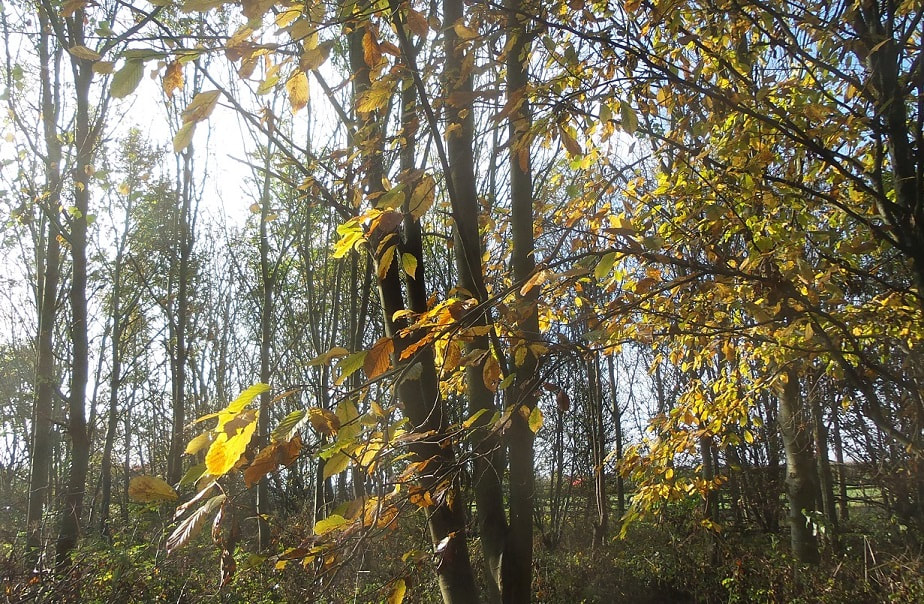Ian’s Wood
|
This 3 acre site was planted with broad-leaf trees and shrubs in 1986 to form two woodland blocks; Ian’s Wood North (IWN) and Ian’s Wood South (IWS), divided by a track leading to a bridleway. Tree species planted were native English Oak, Ash, Cherry, Hornbeam, Alder and Lime species along with Norway Maple and Horse Chestnut. Other trees which appear to be natural colonisers include Crack Willow, Goat Willow, Elm species and Sycamore. Self-set Ash and Norway Maple seedlings and saplings are also common within the plantation, especially in the southern block.
|
The shrub layer and hedges include Hawthorn, Hazel, Field Maple, Dog Wood, Wayfaring Tree, Blackthorn and Spindle with patches of Bramble. Ivy is present on some of the trees. The site was previously semi-improved grassland and small numbers of Cowslips and Meadow Buttercups are still present in some of the less shaded areas. The ground flora is now dominated by Common Nettle, Cow Parsley, Hogweed and Cleavers with occasional Creeping Buttercup, Herb Bennet, Great Willowherb, Wood Forget-me-not and Wood Dock demonstrating the transition from meadow to woodland. Grasses present include Yorkshire Fog, Meadow Fox-tail, False Oat-grass, Rough Meadowgrass and Hairy Brome. Male Fern grows in the northern block and there is a small patch of Ramsons present in that block (possibly introduced).
|
A pond in the northern block dries out most summers and is known to have held Great-crested Newts in the past so in 2019 work was undertaken to improve the pond habitat funded through a Natural England mitigation scheme. Some of the trees shading the pond have been coppiced to let in light and create better structure in the yound woodland. Soft Rush grows at the edge and the bank has Common Nettle dominating the flora with occasional Hedge Woundwort which supports various insects including Woundwort Shieldbugs.
|
A small pond in the southern block has Reed Sweet Grass encroaching and is covered with floating Duckweed. Invertebrates noted in the wood are typical of dappled shade and nettle patches and include Speckled Wood butterfly, Early Bumblebee Bombus pratorum, Green Dock Beetle, Red & Black Froghopper and Green Nettle Weevil. Cherry Ermine Moth caterpillars have been found feeding within their silken webs on Cherry leaves and Orange-tip butterflies have been seen taking nectar from the Cherry blossom.
Deadwood is being intentionally left on the ground to improve the woodland structure and it is important that this is left to decay as it attracts various woodland invertebrates as well as fungi.
Birds noted include Blackbird, Blackcap, Wren, Chaffinch, Chiffchaff, Goldfinch, Long-tailed Tit, Great Tit, Wood Pigeon, and Jackdaw. House Sparrow, Collared Dove and Magpie give away the presence of nearby human habitation. Muntjac are present in the woodland and Foxes have been seen occasionally.
Some thinning out of the trees has been carried out to let more light into the woodland to benefit the ground flora.
Some thinning out of the trees has been carried out to let more light into the woodland to benefit the ground flora.














